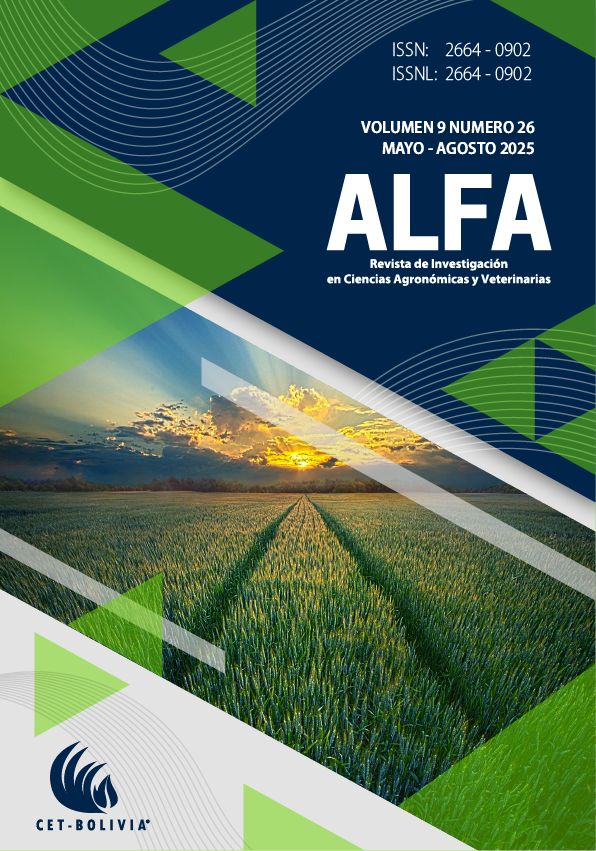Optimización nutricional y sensorial: panetón con kiwicha y aguaymanto en el contexto andino peruano
Nutritional and sensory optimization: panettone with kiwicha and aguaymanto in the peruvian andean contextContenido principal del artículo
La innovación en panificación busca mejorar el valor nutricional de productos tradicionales como el panetón, de alta demanda en Perú, mediante ingredientes andinos subutilizados. El objetivo del estudio es determinar el impacto de tres niveles de sustitución de harina de kiwicha sobre las características fisicoquímicas y microbiológicas del panetón con aguaymanto deshidratado en el contexto andino peruano. La metodología es de enfoque cuantitativo, se realizó un diseño experimental, elaborando panetones y analizando su composición fisicoquímica, estabilidad microbiológica (45 días), perfil textural (TPA) y aceptabilidad sensorial (n= 44, escala hedónica 1-5). Este estudio evaluó el efecto de sustituir parcialmente harina de trigo por harina de kiwicha (Amaranthus caudatus) (10%, 15%, 20%) en panetón con aguaymanto (Physalis peruviana L.) deshidratado, para determinar el nivel óptimo que equilibre aceptabilidad sensorial y mejora nutricional. Los resultados evidencian que la sustitución incrementó significativamente proteína, fibra, ceniza y grasa, y redujo humedad y actividad de agua; texturalmente, aumentó la dureza y disminuyó cohesividad y elasticidad. Sensorialmente, la formulación con 15% de kiwicha (T2) obtuvo la mayor aceptabilidad general (3.9±0.7), significativamente superior a las de 10% (T1) y 20% (T3), siendo esta última penalizada en color, olor, suavidad y humedad. El panetón T2 presentó un 48.7% más de proteína, 36.3% más de fibra y 52.3% menos de grasa que un referente comercial, cumpliendo con los límites microbiológicos. Se concluye que la sustitución al 15% con kiwicha es una alternativa viable para obtener un panetón tradicional nutricionalmente mejorado y sensorialmente aceptable en el contexto peruano.
Innovation in baking seeks to improve the nutritional value of traditional products such as panettone, a high-demand product in Peru, by using underutilized Andean ingredients. The objective of this study is to determine the impact of three levels of kiwicha flour substitution on the physicochemical and microbiological characteristics of panettone with dehydrated cape gooseberry (Physalis peruviana L.) in the Peruvian Andean context. The methodology is quantitative, with an experimental design, preparing panettone and analyzing its physicochemical composition, microbiological stability (45 days), textural profile (TPA), and sensory acceptability (n=44, hedonic scale 1-5). This study evaluated the effect of partially substituting wheat flour with kiwicha (Amaranthus caudatus) flour (10%, 15%, 20%) in panettone with dehydrated cape gooseberry (Physalis peruviana L.) to determine the optimal level that balances sensory acceptability and nutritional improvement. The results show that the substitution significantly increased protein, fiber, ash, and fat, and reduced moisture and water activity; texturally, it increased hardness and decreased cohesiveness and elasticity. Sensorily, the formulation with 15% kiwicha (T2) had the highest overall acceptability (3.9 ± 0.7), significantly higher than the 10% (T1) and 20% (T3) formulations, the latter being penalized in color, odor, softness, and moisture. The T2 panettone had 48.7% more protein, 36.3% more fiber, and 52.3% less fat than a commercial reference, meeting microbiological limits. It is concluded that the 15% substitution with kiwicha is a viable alternative for obtaining a nutritionally improved and sensorially acceptable traditional panettone in the Peruvian context.
Descargas
Detalles del artículo
Peris M, Rubio S, Castelló M, Ortolá M. From the laboratory to the kitchen: New alternatives to healthier bakery products. Foods. 2019; 8(12), 660. https://doi.org/10.3390/foods8120660
Baraniak J, Kania M. The dual nature of amaranth—Functional food and potential medicine. Foods. 2022; 11(4), 618. https://doi.org/10.3390/foods11040618
Shenstone E, Lippman Z, Van Eck, J. A review of nutritional properties and health benefits of Physalis species. Plant Foods for Human Nutrition. 2020; 75, 316-325. https://doi.org/10.1007/s11130-020-00821-3
Co?ovanu I, Mironeasa S. Effects of molecular characteristics and microstructure of amaranth particle sizes on dough rheology and wheat bread characteristics. Scientific reports. 2022; 12(1), 7883. https://doi.org/10.1038/s41598-022-12017-7
Nasir S, Allai F, Gani M, Ganaie S, Gul K, Jabeen A, Majeed D. Physical, textural, rheological, and sensory characteristics of amaranth?based wheat flour bread. International Journal of Food Science. 2020; 2020(1), 8874872. https://doi.org/10.1155/2020/8874872
Mesta M, Gómez R, Balagurusamy N, Torres C, Hernández A. Technological and Nutritional Aspects of Bread Production: An overview of current status and future challenges. Foods. 2024; 13(13), 2062. https://doi.org/10.3390/foods13132062
Debonne E, De Leyn I, Vroman A, Spaepen G, Van Hecke M, Ruyssen T, Eeckhout M. Technological and microbiological evaluation of different storage conditions of par-baked bread. LWT. 2020; 131, 109757. https://doi.org/10.1016/j.lwt.2020.109757
García B, Fernández N, Vázquez M, Quiroga M, Munoz N, Romero M. Sensory descriptive analysis and hedonic consumer test for Galician type breads. Food Control. 2022; 134, 108765. https://doi.org/10.1016/j.foodcont.2021.108765
Co?ovanu I, Mironeasa S. Impact of different amaranth particle sizes addition level on wheat flour dough rheology and bread features. Foods. 2021; 10(7), 1539. https://doi.org/10.3390/foods10071539
Zula A, Ayele D, Egigayhu W. Proximate, antinutritional, microbial, and sensory acceptability of bread formulated from wheat (Triticum aestivum) and amaranth (Amaranthus caudatus). International Journal of Food Science. 2020; (1), 9429584. https://doi.org/10.1155/2020/9429584
Gebreil S, Ali M, Mousa E. Utilization of amaranth flour in preparation of high nutritional value bakery products. Food and Nutrition Sciences. 2020; 11(5), 336-354. https://doi.org/10.4236/fns.2020.115025
Bazalar M, Nazareno M, Viturro C. Optimized formulation of a Physalis peruviana L. fruit nectar: physicochemical characterization, sensorial traits and antioxidant properties. Journal of Food Science and Technology. 2020; 57(9), 3267-3277. https://doi.org/10.1007/s13197-020-04358-w
Muñoz P, Parra F, Simirgiotis M, Sepúlveda G, Parra C. Chemical characterization, nutritional and bioactive properties of Physalis peruviana fruit from high areas of the Atacama Desert. Foods. 2021; 10(11), 2699. https://doi.org/10.3390/foods10112699
Calderón A, Mercado L, Heredia N, Luna V, Porras P, González H, Islas A. Highly nutritional bread with partial replacement of wheat by amaranth and orange sweet potato. Foods. 2022; 11(10), 1473. https://doi.org/10.3390/foods11101473
Aguiar E, Santos F, Centeno A, Capriles V. Defining amaranth, buckwheat and quinoa flour levels in gluten-free bread: A simultaneous improvement on physical properties, acceptability and nutrient composition through mixture design. 2022; Foods, 11(6), 848. https://doi.org/10.3390/foods11060848

